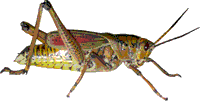Entomology Collections, Miscellaneous
Date of this Version
1998
Abstract
We tested the effect of 2 exposure methods and 2 environmental factors, temperature and humidity, on Beauceria bassiana (Deuteromycotina: Hyphomycetes) mycosis in Hippodamia convergens Guerin-Meneville (Coleoptera: Coccinellidae). We found that the standard EPA bioassay method of exposing nontarget insects by immersion resulted in a per-insect dose that was 5 times greater than that from spray applications. However, this difference did not significantly affect mycosis levels in a simulation of field applications conducted in the greenhouse. In contrast, differences in environmental conditions between the laboratory and greenhouse had a large effect on mycosis. Constant temperatures between 15 and 35°C had a significant effect on both germination rate and vegetative growth of B. bassiana, with the fastest germination occurring at 25-32°C and the fastest growth occurring at 30°C. Although temperature affected the rate of conidial germination, total germination eventually reached 97-100% at all temperatures. Contrary to these results, levels of mycosis in lady beetles decreased as temperatures increased over this same range. Although high levels of humidity are required for conidial germination, we found no well-defined threshold period of high humidity exposure required for mycosis in this insect. In other words, the effects of temperature and humidity on free-living stages of the pathogen are not sufficient to explain the effect of these factors on mycosis. We suggest that temperature and humidity also affect physiological interactions between the host and pathogen.


Comments
Published in Environ. Entomol. 27(6): 1.506-1.513 (1998).